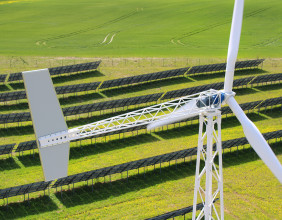Buy-to-let landlords who are exiting the market because of a government clampdown may be experiencing a tough time, but new figures suggest the blow of selling up has been softened by years of house price gains. According to a research by estate agents Hamptons International, landlords in England and Wales cashed in an average profit of £79,770 before tax in 2018, while they made an average gain of £248,000 in London. Though the average profit was £3,660 less than the £83,430 that landlords made in 2017, only 15 per cent made a loss last year, underscoring the growth of housing equity in the capital over the past decade.
The research shows that during a phase of rampant house price growth in high-value areas such as London and the south-east of England, landlords took a long-term approach to property investing; having owned their property for an average of just over nine and a half years. During this period, they saw house prices rising by 30%. However, the figures showed that, as house prices have been experiencing downward pressure, especially in high-value areas, gains from selling had declined in many places. The average profit for a landlord selling up in 2018 was lower by £24,000 than if they had sold in 2017. Half of ten regions reported a fall in average profit before tax.
Landlords have faced a wave of changes since 2016, including tighter regulations and a tougher tax regime, as the government introduced measures to douse its growth amid worries about an overheated market. This has led to a decline in profits which has squeezed many investors out of the sector, forcing them to reinvest elsewhere in search of better yields. From 2017 tax relief on mortgage interest began to be phased out and a stamp duty surcharge of 3 percentage was introduced on second homes and buy-to-let properties in 2016. As compared to the previous tax code, the average stamp duty bill for a buy-to-let property is now £3,910 more, while landowners are now paying an extra £11,760 on stamp duty in London. This sector is also experiencing new restrictions on mortgage borrowing.
Still, investors are left with a significant profit, even once capital gains tax is taken into account, as rapid growth in property prices over the last decade has left long-term investors with properties worth far more today. However, landlords' appetite to invest today has declined considerably due to a crackdown on tax relief and higher investment costs. Previous research by Hamptons estimates that approximately 120,000 investors have sold up and left the industry entirely, indicating a large net sell-off in buy-to-let properties over the past three years.
More investors are now shifting their focus from capital gains to yields as future house price growth is expected to be low and mortgage regulation gets tighter. An analysis by Hamptons found that average yields, having fallen every year since 2015, had risen to 5.9 per cent in the last six months of 2018. Yields for buy-to-let landlords on properties in England and Wales have improved due to falling house prices and steady or rising rents. Driven by a 3.9 per cent year-on-year increase in London rents, rental growth in Great Britain accelerated to its highest level since January 2018.
Analysts have warned that rents for tenants might be pushed up due to a sell-off in the market.




